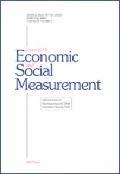
Sheldon Danziger, and Robert Schoeni
Despite the frequent use of the Panel Study of Income Dynamics (PSID) in poverty research, no recent studies have examined how to accurately measure long-term trends in poverty with these data. In this paper, we describe how to accurately measure poverty over the course of the PSID panel. We benchmark our poverty rates with published rates from the US Census Bureau’s March Current Population Survey (CPS). The PSID time series based on poverty thresholds we developed is more highly correlated with the CPS time series than are the rates based on the two thresholds currently available in the PSID data file for the entire 1967–2004 period. Another PSID poverty threshold, available only from 1989 onwards, yields poverty rates that have a correlation of 0.96 with the CPS series, about the same as the correlation when our methods for measuring poverty are used for these years.